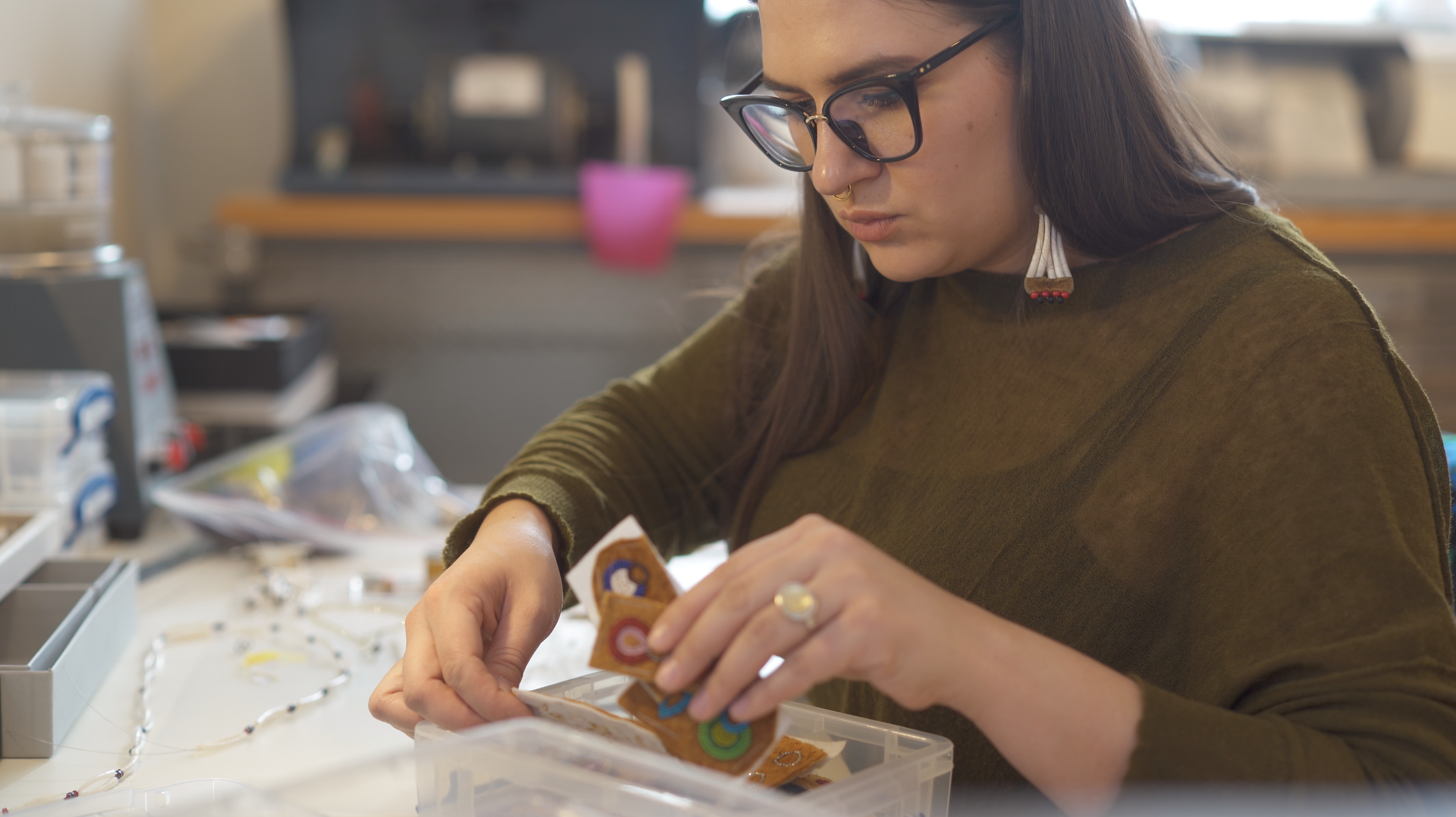
The federal government ‘sees a long-term future for the oilsands.’ Here’s what you need to know
An internal document obtained by The Narwhal shows how the natural resources minister was briefed...
This is part three of Land Crafted: a five-part video series exploring entrepreneurship in northern Canada.
Tania Larsson’s jewelry has become as much a must-have among fashion-conscious Yellowknifers as mukluks. But it’s gone far, far beyond her small northern city.
Her work has adorned Tanya Tagaq on the cover of Exclaim! Magazine. Her string of dentalium shells exhorting the audience to “Protect the caribou” was featured on the cover of Nation magazine.
And in April, she landed in the pages of British Vogue among a list of “Indigenous beaders who are modernizing their craft.”
Her handmade jewelry is a stunning blend of innovative design and traditional materials. Musk ox horn, rough and bland, is cut and polished into gemstone-like brilliance. Dentalium shells, once traded throughout North America as currency, form long strings that clack and clatter on necklaces and earrings. Tufts of caribou fur are turned into velvet on patches of moose hide Larsson tanned herself. Vintage hand-cut beads, plucked from a Renaissance-era Venetian back room, adorn it all. Diamonds, gold and silver take a backseat to these fabulous materials of Gwich’in tradition.
It’s not by mistake that Larsson has put her culture front and centre among such rarefied company.
“What I like to do is really research Gwich’in adornments — through museum collections, through talking with elders or knowledge-holders — and create pieces that are rooted in what we used to wear and the importance that we carried with adornments,” she says.
Larsson brings a professional approach to her work, having studied at the Institute of American Art in Santa Fe, New Mexico, and completed an internship at the Smithsonian Institute.

Tania Larsson sorts through caribou hair tuft jewelry in progress in her studio in Yellowknife. Photo: Jimmy Thomson / The Narwhal
The result of that work is not cheap. And that’s by design.
“Whenever I would do markets and art fairs… I would see people nickel-and-diming elders and people who have been doing this work for, you know, 50 years, and they’re masters in their art practice,” she laments.
Larsson is not the only person to notice the way the public interacts with Indigenous artists. Mandee McDonald, managing director of Dene advocacy group Dene Nahjo, has seen the same trend.
“When you walk into an art gallery anywhere, you don’t walk into the art gallery and [say], ‘oh, this painting is $1,000; I’ll give you $500 for it!’” she says.
“But when you’re buying art off of an artist, and they might be in a little bit more of a vulnerable position in terms of their selling ability… It seems like some people think that is a more appropriate setting to try and haggle a little bit.”
The disparity had a lasting impact on Larsson.
“Seeing people trying to barter was very, very poignant for me. It really changed the way I saw pricing,” she says. “It’s not because someone is brown that their artwork should be less valued.”
That moment changed the way she approaches pricing in her own work. She raised her prices and committed to never lowering them.
The strategy has proven effective. Larsson’s work is growing in popularity — she says keeping up with demand is her biggest challenge — while her prices rise.
“It’s amazing for me because as I’m raising my prices, my clients that were there from the start are still buying my pieces even though they see that evolution.”
This series was made possible with the support of EntrepreNorth; however, the organization did not have editorial input into the videos or articles published on The Narwhal.
Get the inside scoop on The Narwhal’s environment and climate reporting by signing up for our free newsletter. On March 17, federal Conservative Leader Pierre Poilievre...
Continue reading
An internal document obtained by The Narwhal shows how the natural resources minister was briefed...

Notes made by regulator officers during thousands of inspections that were marked in compliance with...

Racing against time, dwindling habitat and warming waters, scientists are trying to give this little-known...
